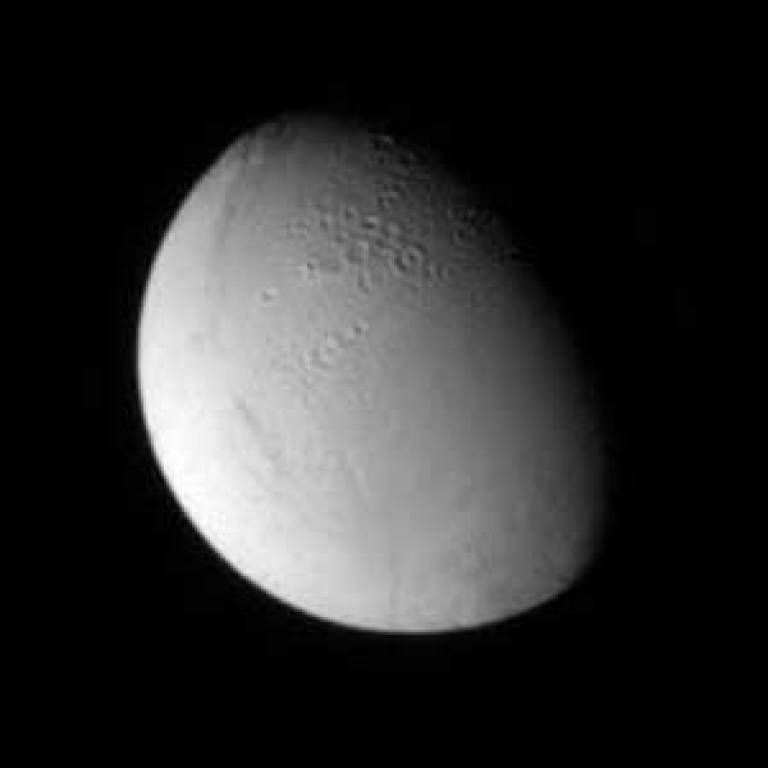The secrets of Saturn's moons
12 April 2010
Links:
 es.ucl.ac.uk/" target="_self">UCL Earth Sciences
es.ucl.ac.uk/" target="_self">UCL Earth Sciences
Saturn's moons have become a source of increasing fascination thanks to a stream of data from the Cassini-Huygens spacecraft.
Much of the excitement has focused on the atmospheric chemistry of the Saturnian moons Titan and Enceladus.
Early in its mission, Cassini-Huygens discovered a plume that fountains water vapour and ice particles above Enceladus.
Since then, scientists have found that these water products dominate Saturn's magnetic environment and create Saturn's huge E-ring.
At Titan, Cassini-Huygens detected extremely large negative hydrocarbon ions with masses up to 13,800 times that of hydrogen.
Researchers at UCL's Mullard Space Science Laboratory led the team which designed and built the Electron Spectrometer, part of Cassini's CAPS instrument, which continues to make invaluable discoveries.
In this video PhD student Sheila Kanani takes us on a journey aboard Cassini-Huygens to Saturn and its moons, and explains why space scientists regard them as the most intriguing destinations in the Solar System.
Image: The Cassini spacecraft looks down at craters near the north pole of Enceladus (credit: NASA/JPL/Space Science Institute).
UCL context
MSSL is the UK's largest university-based space science research group and delivers a cutting-edge science programme, underpinned by a capability in space science instrumentation, systems engineering and project management.
The Cassini-Huygens mission is a cooperative project of NASA, the European Space Agency and the Italian Space Agency.
Related stories:
Blast off for UCL-led satellite mission
'Ingredients for life' present on Saturnian moon, say UCL scientists
 Close
Close

